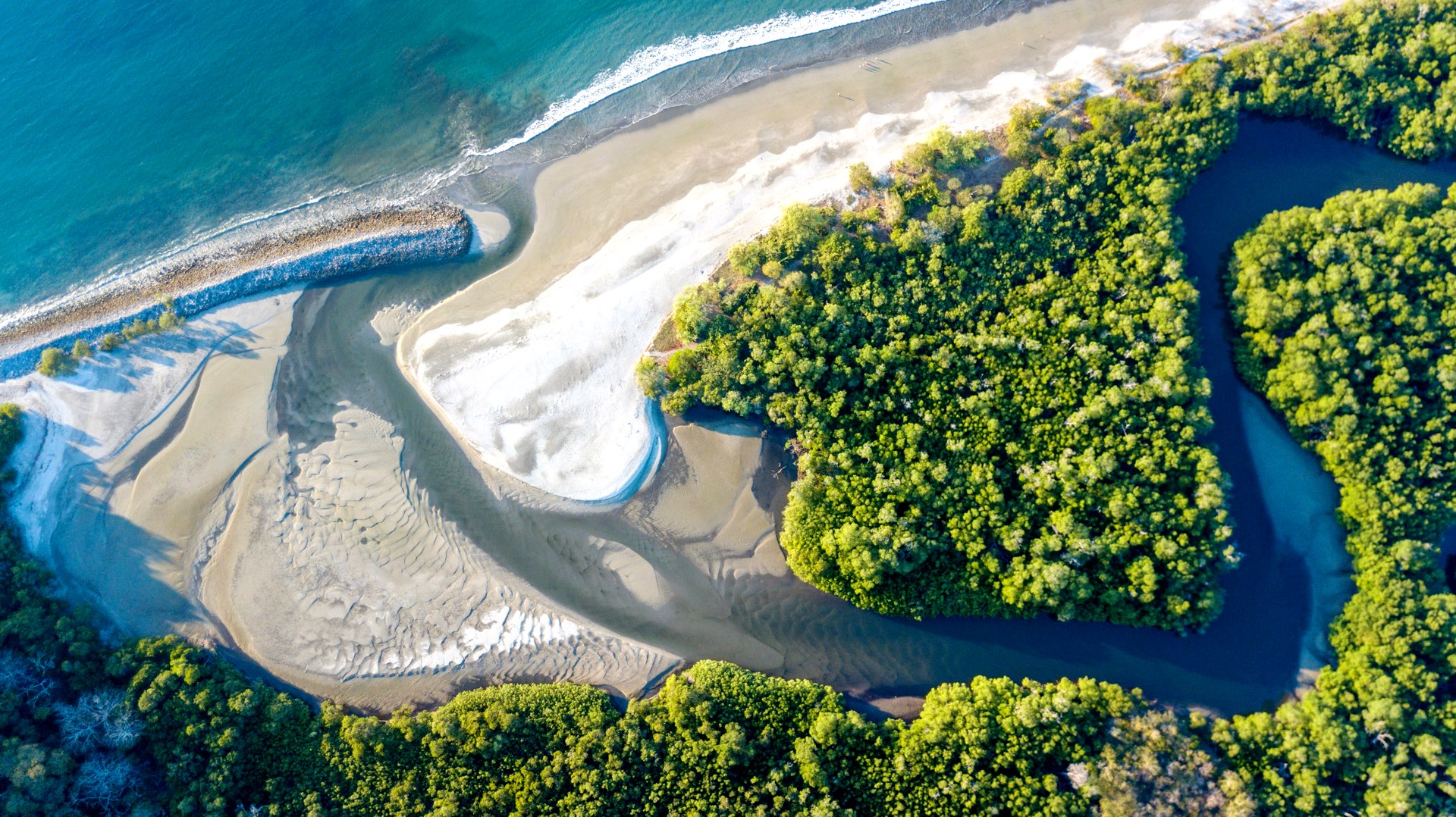So, my Guanacaste journey continues. I had conquered the fear of change by trusting my heart and took one giant leap of faith into the unknown. My bustling hometown, all but a distant memory now. It has now been a few weeks since I traveled to West Guanacaste and set up camp at Playa Cabuyal, a pristine beach set amid verdant vegetation; my little paradise.
The once familiar roar of city traffic had now shifted into a roar of nature. The monstrous columns of towering concrete had been replaced with innumerable species of a tropical tree, each with their own distinctive characteristics. I am still adapting to my new eco-centric life, yet I already feel more connected to nature. Not just physically, but also spiritually too.
Without the manic hustle and bustle of city life, I am able to participate in some quality me-time. With ample nature trails at my fingertips, I lose myself to the forest for hours upon end. Walking, almost aimlessly, with no true destination in sight, allows me to appreciate the value of these tropical ecosystems.
Not only are these systems perfectly balanced to support such a high diversity of wildlife, they also help us as a global community to thrive. Of course, there is the indirect benefits of such systems, such as climate regulation, but right here in the moment, I could see the immense wealth of the forest for myself: trees bursting with exotic fruits.
There’s one thing to go to the supermarket and bag yourself a “fresh” mango, but it’s a completely different thing to pick the fruit straight from the tree itself. Warm, sticky juice dribbles down my face as I couldn’t resist the temptation to bite into the succulent fruit.
It’s also astonishing to see cashew fruits growing in the wild. I had never seen, or even associated, the typically salted nut in fruit form. Again, I couldn’t resist a taste. I stayed away from the nut itself, knowing raw cashew nuts are poisonous. The fruit, however, is in fact related to mangos and has a juicy yet bitter taste to it.
There was a particular fruit that I was trying to find. I did not need to look for long, as the sheer abundance of produce on offer is mind-blowing. In front of me, slightly hidden by the mass of shrubs and vines, stood a guanabana tree. “A what?”, I hear you ask. Well, you’re not alone.
Despite its unique appearance of being large and spiky, it’s not commonly consumed outside costa Rica. Surprising really, seeing as this refreshing pear-like fruit is known for its numerous health properties, with many believing it may help combat cancer.
As weeks draw on, I begin discovering more about my new home and the wild occupants I share with. An assortment of birds visits this part of Guanacaste, both migratory and resident, owing to the variety of habitats: estuaries, mangroves, coastal and dry forest. One bird, however, snatches my attention.
The turquoise motmot. With its streaked iridescent blue and jet black markings, this eccentric- looking bird rivals any drag queen. This arboreal species is relatively common, with a range stretching from Mexico to Costa Rica. The locals here often refer to these birds as “Pajaro bobo”, or “foolish bird” due to the unusual behavior of allowing humans to approach the animal without flying away.
Ah, I managed to slip a bit of Spanish in there. Before venturing to Guanacaste, I’d not had the opportunity to learn Spanish. I simply had no time to sit myself down and study, and so I cherish being thrown straight into the deep end and forcing myself further outside my comfort zone to pick up a new life skill.
Now, I am far from fluent, but every day is a new opportunity to learn and put myself out there. However, it is not a necessity. Many people in Costa Rica can speak English, which ironically made me feel welcomed, yet I am motivated to embrace new cultures and speak the same language as the locals I meet on a day-to-day basis.
On a daily occurrence, I find myself drawn towards the beach. It’s easy for my mind to wander, as here in the little paradise that is Cabuyal, time seems to stand still. I find myself peacefully watching the harmonious community crafting bracelets out of the beautifully intricate seeds of the Guanacaste seeds, or expertly making copos, a frozen milk-based delicacy usually found around coastal regions across the province. The hysteric rush of city life is nowhere to be seen.
Although I do love to people watch, the breaking waves against the soft golden sand call out to me. The warm water laps at my feet, begging me to explore this salty realm. Unexpectedly, an eruption of life unfolds before my eyes, a hunt was commencing.
In the sky, frigate birds, which normally soar high and scan the ocean desert for prey swimming below, begin to swarm. These tropical marine birds look as if they’ve been coated in oil, with their sleek black plumage and a dark hooked bill.
Beneath the waves, larger predatory fish begin chasing smaller fish to the surface, within reach of hungry mouths. With all the commotion, more predators swarm the area, neotropical dolphins and pelicans joined the frenzy. I am transfixed. Never have I ever encountered such a spectacle. It’s as if I’m living in a live nature documentary.
Such a profusion of life is hard to come by elsewhere on the planet. To be able to indulge in the freshest harvest Mother Earth produces or witness first-class natural wonders is so exhilarating. In fact, just living among those who value the Earth is so liberating. Coined the blue zone, where people live the longest and are healthiest, Guanacaste is one of five in the World, and it’s easy to see why.
Join me next time as I continue exploring the riches of Guanacaste.








0 Comments